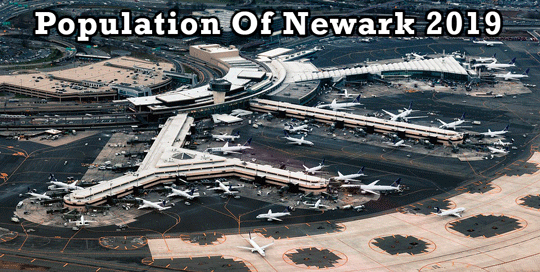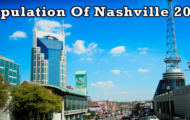Newark is the largest city in the state of New Jersey. Situated in the core of New Jersey‘s Gateway Region, Newark is the second largest city in the New York metropolitan zone. It is a base camp to various associations, for example, Panasonic Corporation and others. It is in addition home to a few colleges, for example, the New Jersey Institute of Technology and also the Seton Hall University’s Law School.
It is divided into five geographical wards and neighborhoods extending from clamoring urban regions to calm provincial enclaves. The city saw massive current and population growth amidst the nineteenth century and experienced racial strain and urban decrease in the second half of the twentieth century.

Additionally, the city has a large Asian and Black population and that is very evident with the number of shops under the ownership of the Asian community.
POPULATION OF NEWARK IN 2019:
To discover the right numbers as far as the number of inhabitants in Newark in 2019, we need to get the population information of the most recent 5 years. They are as per the following:
- 2014 – 280,579
- 2015 –281,944
- 2016 – 282,912
- 2017 – 283,870
- 2018 - 284,830
We go through the population of Newark from the period of 2014-18 and we clearly notice that the population has increased by 4251 in the past 5 years. From this, it has been seen that the population each year goes up by 850.2. So, the number of people in Newark in 2019 is expected to be 284,830 + 850.2 = 285,680.2. Consequently, the population figure in Newark in the year of 2019 as per numbers = 285,680.2.
Newark Population 2019 - 285,680.2 Million (estimated)
DEMOGRAPHY OF NEWARK:
From 1950s to 1967, the population of whites shrank from 363,000 to 158,000; black population went up from 70,000 to 220,000. The rate of Non-Hispanic whites reduced from a stunning 82.8% in the year 1950 to 11% by 2010. The rate of Latinos grew from 1980 and 2010, from 18% to 34%.
Poverty remains a noteworthy issue in the city even after its revival recently. Beginning at 2010, roughly 33% of its population got ruined.
POPULATION DENSITY AND GROWTH OF NEWARK:
The population density of Newark is 4,424 persons per square kilometer. The population growth rate has been unfaltering and it is estimated that in the years to come the city will quicken with respect to population as a result of greater number of vagrants coming over here from different parts of the United States.
FACTS ABOUT NEWARK:
-
The Newark Museum is the biggest museum in the state of New Jersey. The main highlights are the American and Tibetan craftsmanship.
-
In excess of 100,000 people drive to Newark each workday, making it the state’s greatest business center point with numerous salaried occupations in finance and government.
-
Newark as a city has a great deal of industry and light manufacturing as well.
-
Newark is the second most racial diverse city in New Jersey. It is divided into five political wards, which are frequently used by occupants to perceive their place of home. Of late, occupants have begun to identify with specific neighborhood names instead of the greater ward monikers. Regardless, the wards remain tolerably specific.
-
Port Newark is a piece of Port Newark-Elizabeth Marine Terminal and the greatest cargo office in the Port of New Jersey. It is controlled by the Port Authority of New York and New Jersey and fills in as the key compartment transport office for items entering and leaving the New York metropolitan zone and the northeastern quadrant of North America.



